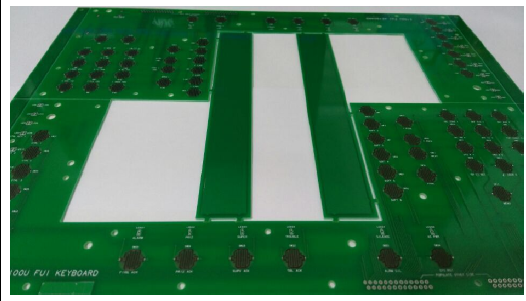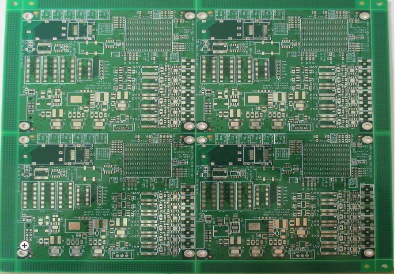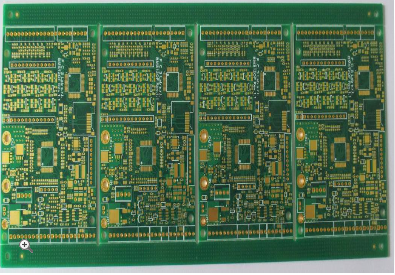-
 Agriculture
Agriculture
-
 Health-Care
Health-Care
-
 Environment
Environment
-
 Construction-Real-Estate
Construction-Real-Estate
-
 Tools-Hardware
Tools-Hardware
-
 Home-Garden
Home-Garden
-
 Furniture
Furniture
-
 Luggage-Bags-Cases
Luggage-Bags-Cases
-
 Medical-devices-Supplies
Medical-devices-Supplies
-
 Gifts-Crafts
Gifts-Crafts
-
 Sports-Entertainment
Sports-Entertainment
-
 Food-Beverage
Food-Beverage
-
 Vehicles-Transportation
Vehicles-Transportation
-
 Power-Transmission
Power-Transmission
-
 Material-Handling
Material-Handling
-
 Renewable-Energy
Renewable-Energy
-
 Safety
Safety
-
 Testing-Instrument-Equipment
Testing-Instrument-Equipment
-
 Construction-Building-Machinery
Construction-Building-Machinery
-
 Pet-Supplies
Pet-Supplies
-
 Personal-Care-Household-Cleaning
Personal-Care-Household-Cleaning
-
 Vehicle-Accessories-Electronics-Tools
Vehicle-Accessories-Electronics-Tools
-
 School-Office-Supplies
School-Office-Supplies
-
 Packaging-Printing
Packaging-Printing
-
 Mother-Kids-Toys
Mother-Kids-Toys
-
 Business-Services
Business-Services
-
 Commercial-Equipment-Machinery
Commercial-Equipment-Machinery
-
 Apparel-Accessories
Apparel-Accessories
-
 Security
Security
-
 Shoes-Accessories
Shoes-Accessories
-
 Vehicle-Parts-Accessories
Vehicle-Parts-Accessories
-
 Jewelry-Eyewear-Watches-Accessories
Jewelry-Eyewear-Watches-Accessories
-
 Lights-Lighting
Lights-Lighting
-
 Fabric-Textile-Raw-Material
Fabric-Textile-Raw-Material
-
 Fabrication-Services
Fabrication-Services
-
 Industrial-Machinery
Industrial-Machinery
-
 Consumer-Electronics
Consumer-Electronics
-
 Electrical-Equipment-Supplies
Electrical-Equipment-Supplies
-
 Electronic-Components-Accessories-Telecommunications
Electronic-Components-Accessories-Telecommunications
-
 Home-Appliances
Home-Appliances
-
 Beauty
Beauty
-
 Chemicals
Chemicals
-
 Rubber-Plastics
Rubber-Plastics
-
 Metals-Alloys
Metals-Alloys
- Masonry Materials
- Curtain Walls & Accessories
- Earthwork Products
- Fireproofing Materials
- Heat Insulation Materials
- Plastic Building Materials
- Building Boards
- Soundproofing Materials
- Timber
- Waterproofing Materials
- Balustrades & Handrails
- Bathroom & Kitchen
- Flooring & Accessories
- Tiles & Accessories
- Door, Window & Accessories
- Fireplaces & Stoves
- Floor Heating Systems & Parts
- Stairs & Stair Parts
- Ceilings
- Elevators & Escalators
- Stone
- Countertops, Vanity Tops & Table Tops
- Mosaics
- Metal Building Materials
- Multifunctional Materials
- Ladders & Scaffoldings
- Mouldings
- Corner Guards
- Decorative Films
- Formwork
- Building & Industrial Glass
- Other Construction & Real Estate
- Wallpapers/Wall panels
- HVAC System & Parts
- Outdoor Facilities
- Prefabricated Buildings
- Festive & Party Supplies
- Bathroom Products
- Household Sundries
- Rain Gear
- Garden Supplies
- Household Cleaning Tools & Accessories
- Lighters & Smoking Accessories
- Home Storage & Organization
- Household Scales
- Smart Home Improvement
- Home Textiles
- Kitchenware
- Drinkware & Accessories
- Dinnerware, Coffee & Wine
- Home Decor
- Golf
- Fitness & Body Building
- Amusement Park Facilities
- Billiards, Board Game,Coin Operated Games
- Musical Instruments
- Outdoor Affordable Luxury Sports
- Camping & Hiking
- Fishing
- Sports Safety&Rehabilitation
- Ball Sports Equipments
- Water Sports
- Winter Sports
- Luxury Travel Equipments
- Sports Shoes, Bags & Accessories
- Cycling
- Other Sports & Entertainment Products
- Artificial Grass&Sports Flooring&Sports Court Equipment
- Scooters
- Food Ingredients
- Honey & Honey Products
- Snacks
- Nuts & Kernels
- Seafood
- Plant & Animal Oil
- Beverages
- Fruit & Vegetable Products
- Frog & Escargot
- Bean Products
- Egg Products
- Dairy Products
- Seasonings & Condiments
- Canned Food
- Instant Food
- Baked Goods
- Other Food & Beverage
- Meat & Poultry
- Confectionery
- Grain Products
- Feminie Care
- Hair Care & Styling
- Body Care
- Hands & Feet Care
- Hygiene Products
- Men's Grooming
- Laundry Cleaning Supplies
- Travel Size & Gift Sets
- Room Deodorizers
- Other Personal Care Products
- Pest Control Products
- Special Household Cleaning
- Floor Cleaning
- Kitchen & Bathroom Cleaning
- Oral Care
- Bath Supplies
- Yellow Pages
- Correction Supplies
- Office Binding Supplies
- Office Cutting Supplies
- Board Erasers
- Office Adhesives & Tapes
- Education Supplies
- Pencil Cases & Bags
- Notebooks & Writing Pads
- File Folder Accessories
- Calendars
- Writing Accessories
- Commercial Office Supplies
- Pencil Sharpeners
- Pens
- Letter Pad/Paper
- Paper Envelopes
- Desk Organizers
- Pencils
- Markers & Highlighters
- Filing Products
- Art Supplies
- Easels
- Badge Holder & Accessories
- Office Paper
- Printer Supplies
- Book Covers
- Other Office & School Supplies
- Stationery Set
- Boards
- Clipboards
- Stamps
- Drafting Supplies
- Stencils
- Electronic Dictionary
- Books
- Map
- Magazines
- Calculators
- Baby & Toddler Toys
- Educational Toys
- Classic Toys
- Dress Up & Pretend Play
- Toy Vehicle
- Stuffed Animals & Plush Toys
- Outdoor Toys & Structures
- Balloons & Accessories
- Baby Food
- Children's Clothing
- Baby Supplies & Products
- Maternity Clothes
- Kids Shoes
- Baby Care
- Novelty & Gag Toys
- Dolls & Accessories
- Puzzle & Games
- Blocks & Model Building Toys
- Toddler Clothing
- Baby Clothing
- Kids' Luggage & Bags
- Arts, Crafts & DIY Toys
- Action & Toy Figures
- Baby Appliances
- Hobbies & Models
- Remote Control Toys
- Promotional Toys
- Pregnancy & Maternity
- Hygiene Products
- Kid's Textile&Bedding
- Novelty & Special Use
- Toy Weapons
- Baby Gifts
- Baby Storage & Organization
- Auto Drive Systems
- ATV/UTV Parts & Accessories
- Marine Parts & Accessories
- Other Auto Parts
- Trailer Parts & Accessories
- Auto Transmission Systems
- Train Parts & Accessories
- Universal Parts
- Railway Parts & Accessories
- Auto Brake Systems
- Aviation Parts & Accessories
- Truck Parts & Accessories
- Auto Suspension Systems
- Auto Lighting Systems
- New Energy Vehicle Parts & Accessories
- Auto Steering Systems
- Wheels, Tires & Accessories
- Bus Parts & Accessories
- Auto Performance Parts
- Cooling System
- Go-Kart & Kart Racer Parts & Accessories
- Air Conditioning Systems
- Heavy Duty Vehicle Parts & Accessories
- Auto Electrical Systems
- Auto Body Systems
- Auto Engine Systems
- Container Parts & Accessories
- Motorcycle Parts & Accessories
- Refrigeration & Heat Exchange Equipment
- Machine Tool Equipment
- Food & Beverage Machinery
- Agricultural Machinery & Equipment
- Apparel & Textile Machinery
- Chemical Machinery
- Packaging Machines
- Paper Production Machinery
- Plastic & Rubber Processing Machinery
- Industrial Robots
- Electronic Products Machinery
- Metal & Metallurgy Machinery
- Woodworking Machinery
- Home Product Manufacturing Machinery
- Machinery Accessories
- Environmental Machinery
- Machinery Service
- Electrical Equipment Manufacturing Machinery
- Industrial Compressors & Parts
- Tobacco & Cigarette Machinery
- Production Line
- Used Industrial Machinery
- Electronics Production Machinery
- Other Machinery & Industrial Equipment
- Camera, Photo & Accessories
- Portable Audio, Video & Accessories
- Television, Home Audio, Video & Accessories
- Video Games & Accessories
- Mobile Phone & Accessories
- Electronic Publications
- Earphone & Headphone & Accessories
- Speakers & Accessories
- Smart Electronics
- TV Receivers & Accessories
- Mobile Phone & Computer Repair Parts
- Chargers, Batteries & Power Supplies
- Used Electronics
- VR, AR, MR Hardware & Software
- Projectors & Presentation Equipments
- Other Consumer Electronics
- Cables & Commonly Used Accessories
- Computer Hardware & Software
- Displays, Signage and Optoelectronics
- Discrete Semiconductors
- Wireless & IoT Module and Products
- Telecommunications
- Connectors, Terminals & Accessories
- Development Boards, Electronic Modules and Kits
- Circuit Protection
- Sensors
- Isolators
- Audio Components and Products
- Integrated Circuits
- Power Supplies
- Relays
- RF, Microwave and RFID
- Electronic Accessories & Supplies
- Passive Components
- PCB & PCBA
- Air Quality Appliances
- Home Appliance Parts
- Heating & Cooling Appliances
- Small Kitchen Appliances
- Laundry Appliances
- Water Heaters
- Water Treatment Appliances
- Refrigerators & Freezers
- Personal Care & Beauty Appliances
- Major Kitchen Appliances
- Cleaning Appliances
- Second-hand Appliances
- Smart Home Appliances
- Other Home Appliances
- Energy Chemicals
- Inorganic Chemicals
- Basic Organic Chemicals
- Agrochemicals
- Admixture & Additives
- Catalysts & Chemical Auxiliary Agents
- Pigments & Dyestuff
- Coating & Paint
- Daily Chemicals
- Polymer
- Organic Intermediate
- Adhesives & Sealants
- Chemical Waste
- Biological Chemical Products
- Surface Treatment Chemicals
- Painting & Coating
- Chemical Reagents
- Flavor & Fragrance
- Non-Explosive Demolition Agents
- Other Chemicals
- Custom Chemical Services
Innovative Ceramic Filling Techniques for Superior LED PCB Reliability
The rapid advancement of LED technology has placed increasing demands on the reliability and performance of printed circuit boards (PCBs). Among the critical challenges faced by manufacturers is ensuring optimal thermal management and mechanical stability in high-power LED applications. Traditional PCB materials often fall short in meeting these requirements, leading to premature failure and reduced lifespan of LED systems. This is where innovative ceramic filling techniques come into play, offering a groundbreaking solution to enhance PCB reliability.
Ceramic-filled PCBs have emerged as a game-changer in the electronics industry, particularly for LED applications. These advanced materials combine the excellent thermal conductivity of ceramics with the flexibility and cost-effectiveness of traditional PCB substrates. By incorporating ceramic particles into the PCB matrix, manufacturers can achieve superior heat dissipation, reduced thermal expansion, and improved mechanical strength. This article delves into the cutting-edge ceramic filling techniques that are revolutionizing LED PCB reliability, exploring their benefits, applications, and future potential.
The Science Behind Ceramic-Filled PCBs
At the heart of ceramic filling technology lies the unique properties of ceramic materials. Unlike conventional FR-4 substrates, ceramic particles exhibit exceptional thermal conductivity, often ranging from 20 to 200 W/mK depending on the specific ceramic composition. When these particles are uniformly distributed within the PCB matrix, they create efficient thermal pathways that rapidly conduct heat away from sensitive LED components.
The effectiveness of ceramic filling depends on several key factors. Particle size distribution plays a crucial role in determining the packing density and consequently the thermal performance. Smaller particles can fill the voids between larger ones, creating a more homogeneous thermal network. Additionally, the shape of ceramic particles influences their orientation within the polymer matrix, affecting both thermal and mechanical properties.
Advanced Filling Techniques for Optimal Performance
Modern ceramic filling techniques have evolved significantly from simple mixing methods. One innovative approach involves surface modification of ceramic particles to improve their dispersion within the polymer matrix. By treating particle surfaces with coupling agents, manufacturers can achieve better interfacial bonding between the ceramic and resin components, resulting in enhanced mechanical properties.
Another breakthrough technique is the use of graded filling, where different layers of the PCB contain varying concentrations of ceramic particles. This allows for targeted thermal management, with higher ceramic content in areas experiencing greater heat generation. Such precision engineering maximizes thermal performance while maintaining the PCB's structural integrity and flexibility.
Thermal Management Advantages for LED Applications
The primary benefit of ceramic-filled PCBs in LED applications is their superior thermal management capability. LEDs convert only about 30-40% of electrical energy into light, with the remainder being dissipated as heat. Effective heat removal is critical, as excessive temperatures can lead to color shifting, reduced luminous output, and shortened lifespan.
Ceramic-filled substrates address this challenge by providing multiple heat dissipation pathways. The ceramic particles not only conduct heat laterally across the board but also facilitate vertical heat transfer to heat sinks or other cooling mechanisms. This multidimensional thermal management is particularly valuable for high-power LED arrays where heat concentration can be problematic.
Enhanced Mechanical and Electrical Properties
Beyond thermal advantages, ceramic filling techniques significantly improve the mechanical robustness of LED PCBs. The addition of ceramic particles increases the substrate's stiffness and dimensional stability, reducing warpage during thermal cycling. This is especially important for LED applications that experience frequent power cycling or operate in environments with temperature fluctuations.
Electrical properties also benefit from ceramic incorporation. The high dielectric strength of ceramic materials enhances insulation properties, while carefully engineered formulations can optimize dielectric constant and loss tangent for specific frequency requirements. These characteristics make ceramic-filled PCBs suitable for high-frequency LED applications such as visible light communication systems.
Manufacturing Considerations and Challenges
Implementing ceramic filling techniques in PCB production requires careful consideration of manufacturing processes. The increased viscosity of ceramic-filled resins demands adjustments in lamination parameters and may require specialized equipment. Process optimization is necessary to ensure proper flow and distribution of the filled material during PCB fabrication.
Another challenge lies in maintaining consistent quality across production batches. Variations in ceramic particle distribution can lead to non-uniform thermal and mechanical properties. Advanced quality control measures, including automated optical inspection and thermal imaging, are essential for verifying the homogeneity of ceramic-filled PCBs.
Future Directions and Industry Applications
The potential applications of ceramic-filled PCBs extend beyond current LED technologies. As the industry moves toward higher power densities and miniaturization, these advanced substrates will play an increasingly important role. Emerging applications include automotive lighting, where reliability under harsh conditions is paramount, and UV LED systems that generate substantial heat in compact packages.
Research continues to push the boundaries of ceramic filling technology. Novel hybrid approaches combining different ceramic materials, development of nano-ceramic composites, and integration with other advanced thermal management solutions promise to further enhance LED PCB performance. These innovations will support the next generation of energy-efficient, long-lasting LED products across various industries.
REPORT































































































































































































































































































































































































































































































































































































